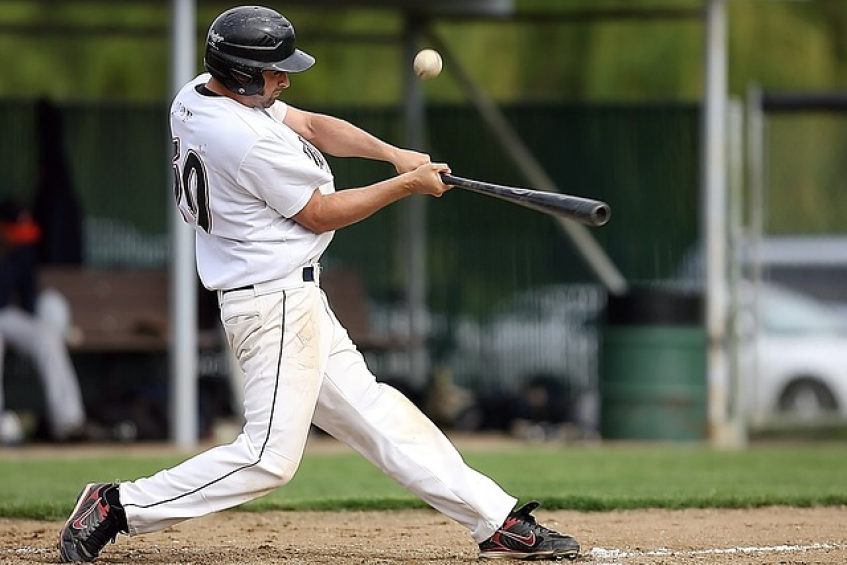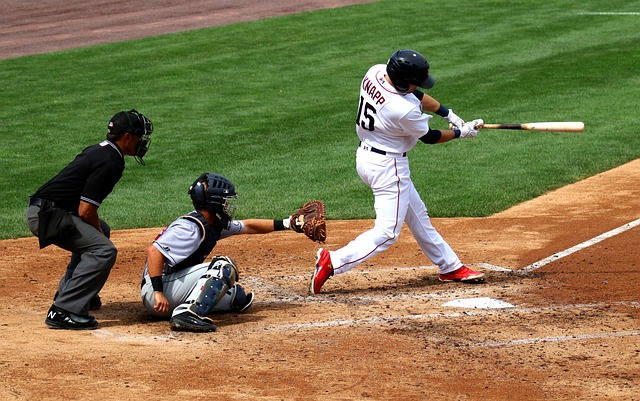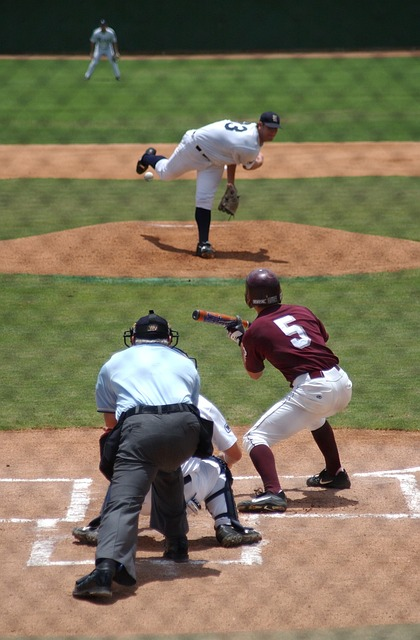
Baseball! Ah, the sweet symphony of sound as bat meets ball, the cheer of the crowd, and the strategic duels between pitcher and batter. Now, if you're new to this beautiful game, you might sometimes feel like you've stepped into a different world with its unique jargon. Today, we're going to decode one of these curious terms: "chin music." Stick around, and by the end of this post, you'll not only understand what "chin music" means in baseball but also its strategic importance, legality, and effect on the game.
"Chin music" might sound like a strange term to be used in a sport like baseball, but trust me, it has nothing to do with singing. So, what is chin music an what does it mean?
"Chin music" in baseball refers to a pitch that is thrown high and inside, dangerously close to the batter's chin. Picture a fastball rising rapidly, flying just a few inches from the batter's face. That, my friends, is your quintessential example of chin music. The aim here isn't to hit the batter, but it's thrown high and close enough to give them a good scare, and possibly, throw them off their game.
Now, as for the exact origin of the term, it's a bit elusive. The phrase "chin music" dates back to the 19th century, used as slang to describe idle talk or chatter. The term was also used during war times to describe the sound of bullets whizzing past soldiers' faces, uncomfortably close to the chin. It's believed the term found its way into baseball, taking on a similar pitch in reference to a ball thrown near the batter's chin.
While it's tough to pin down when exactly "chin music" made its debut in baseball lingo, it's clear that it's been a part of the game's unique language for a good long while.
In the next section, we'll talk about the strategy behind throwing chin music. So keep reading, there's more to learn about this unique baseball tactic.

Now that we know what "chin music" is, it's time to delve into the strategy behind this high and inside pitch. While it might seem like an aggressive, even dangerous move (which, let's be clear, it can be), there is a method to the madness.
First and foremost, the primary purpose of chin music is to intimidate opposing batters. When a pitch is thrown close to the batter's chin, it is a stern reminder of the pitcher's ability and the raw speed at which the ball can travel. This can unsettle the batter, forcing them into a defensive mindset and a poorer batting approach. It's a form of psychological warfare, a way for the pitcher to claim dominance over the plate.
Secondly, chin music is also a tactic to disrupt the batter's rhythm. If a batter is getting too comfortable at the plate, has been hitting well, or perhaps leaning too far over the plate, a pitcher may throw some chin music to break their concentration at bat, and reset the dynamic.
Lastly, chin music could be a form of retaliation or a warning. In baseball, there's a lot of unspoken dialogue that happens with every pitch. If the pitcher's manager suspects an opposing player is engaging in unfair play or if an incident has sparked tension, chin music could be used as a non-verbal message to the opposing team.
However, while this tactic can be effective, it's crucial to remember that baseball is a sport of skill, not violence. The aim of chin music should never be to injure or harm, but rather, it's a strategic move in the chess-like duel between pitcher and batter.
In our next section, we will discuss the rules regarding chin music and its legality in baseball. It promises to be another exciting piece of the puzzle, so don't miss it!
Despite its strategic value, chin music often skates a thin line between a fair play and a foul one. This brings us to the question: Is throwing it legal in baseball?
Yes, chin music is legal, but with several important caveats. In baseball, a pitcher has the right to throw inside as a part of their strategy. However, the game’s rules and the umpire’s judgment come into play if the pitcher is suspected of intentionally trying to hit a batter.
If the umpire believes that a pitcher intentionally threw at a batter's head - which can often be suspected with chin music - they have the authority to warn or even eject the pitcher immediately and the manager from the game. This rule is in place to prevent injuries and maintain the spirit of sportsmanship in the game.
There are also unwritten rules or "codes" in baseball concerning chin music. One of these is the notion of retaliation. If a pitcher hits a batter, whether by accident or design, it's expected that the opposing team's pitcher will respond with it or a brushback pitch. While it's not officially in the rulebook, it’s a part of baseball's long-standing tradition, a form of self-policing among players.
However, these "codes" have been the subject of much debate. Some players and fans argue that these practices are outdated and dangerous, while others see them as a part of the sport's competitive spirit.
Conflict between players can certainly arise from the use of chin music. Batter-pitcher duels can escalate quickly, leading to bench-clearing brawls in some instances. This brings us back to the crux of the matter - it is a tactic used with caution, understanding the potential for conflict and controversy it brings with it.
In the next section, we will look at some notable instances of chin music in the history of baseball. It’s time to flip back the pages of baseball lore, so stay tuned!

Over the years, the controversial strategy of chin music has led to many memorable moments in baseball. There have been numerous instances where it has played a pivotal role, both in altering the course of games and in sparking significant discourse about the tactic's use. Here are a few notable examples:
One of the most famous instances dates back to the 1960s, with the duels between Hall of Fame pitcher Bob Gibson and numerous batters. Gibson, a pitcher for the St. Louis Cardinals, was notorious for his use of chin music as an intimidation tactic. His inside pitches were known to back batters off the plate and control the inside corner.
Another instance that comes to mind is Pedro Martinez, former pitcher for the Boston Red Sox. Renowned for his exceptional pitching skills, Martinez was also known for not shying away from throwing inside and brushing back batters who he felt were crowding the plate too much.
On the receiving end, there have been notable reactions too. For example, in the 2000 World Series, New York Mets catcher Mike Piazza famously shattered his bat on a pitch from New York Yankees pitcher Roger Clemens. The broken bat flew towards Clemens, and he responded by throwing a piece of the shattered bat back towards Piazza, leading to a near confrontation. The tension between them, partially a result of prior chin music, added extra heat to the already fiery 'Subway Series'.
These instances have further fueled the debate over chin music's place in baseball, demonstrating how the tactic can influence the dynamics of the game while also raising questions about its safety and sportsmanship.
In our next section, we will discuss how chin music impacts the batter and the overall game, so be sure to keep reading!
Having understood the intent and the history of chin music, let's now discuss its impact on the batter and the game as a whole.
Firstly, chin music has a profound psychological effect on batters. Imagine standing at the plate, only to have a ball hurtling towards your face at speeds reaching 90mph or more. It's an adrenaline-inducing, fear-instilling moment. Even the most seasoned batters might find their confidence rattled, their rhythm disrupted. It can cause batters to back off the plate, change their stance, or even hesitate during the next pitch - all potential advantages for the pitcher.
In a broader sense, it can shift the overall dynamics of the game. It can break a team's momentum, deter aggressive batting, or even incite tension that alters the mood of the game. Chin music also influences how teams strategize against each other, knowing a pitcher isn't afraid to throw inside.
However, chin music's impact isn't always beneficial for the throwing team. A poorly executed attempt at sweet chin music can lead to the pitcher losing control over their game, leading to walks or poorly placed pitches that batters can capitalize on. It can also incite hostility, leading to possible ejections if the umpire deems it intentional.
In summary, while chin music is a potentially powerful tool in a pitcher's arsenal, it's a double-edged sword. The key lies in its judicious use and intent, emphasizing skill and strategy over aggression.
There you have it, folks - a deep dive into the world of chin music in baseball. This term, steeped in history and strategy, shows how much more there is to baseball than meets the eye. It's a psychological weapon, a test of nerve and skill, and a catalyst for some of the sport's most heated moments.
However, chin music also reminds us of the balance that's crucial to the game. It's a test of a pitcher's control, both over their pitches and their intentions. It's a demonstration of a batter's courage, resilience, and quick footwork in the face of a difficult ball. And above all, it's a symbol of the respect that must exist between opposing teams, even in the heat of competition.
So the next time you see a pitch thrown high and inside, you'll understand the multifaceted implications of that one action. It's not just about throwing a ball; it's a demonstration of strategy, bravado, skill, and even an underlying respect for the rules of the game.
This concludes our deep dive into chin music in baseball. I hope this blog post has added to your understanding and appreciation of the game. Keep an eye out for more interesting topics, deep dives, and engaging baseball stories on our blog.
Chin music in baseball refers to a pitch that's thrown high and inside, dangerously close to a batter's chin. The purpose is to intimidate the batter, disrupt their rhythm, or send a message, not to cause injury.
The slang term for 'chin music' dates back to the 19th century as slang for idle talk. It was also used during wars to describe the sound of bullets whizzing past soldiers' faces, close to the chin. The phrase found its way into baseball, referencing a pitch thrown near the batter's chin.
Chin music is used as a strategic tool to intimidate batters, disrupt their rhythm at the plate, or retaliate in response to perceived unfair actions. It's a psychological tactic used to assert dominance over the plate.
While both involve inside pitches, chin music isn't intended to hit the batter, unlike a beanball. The purpose of chin music is to intimidate, not to cause harm. However, if a pitcher is suspected of intentionally trying to hit the batter, they can be warned or ejected from the game.
Yes, chin music can lead to conflicts. It can be seen as an aggressive move and may lead to confrontations or even bench-clearing brawls if tensions escalate. This underlines the need for pitchers to use this tactic judiciously.
Yes, throwing chin music is legal in baseball. However, if an umpire believes that a pitcher is intentionally trying to hit the batter, they can issue warnings or even automatic ejection of the pitcher and their manager from the game.
Yes, baseball has a number of unwritten rules or 'codes', one of which pertains to chin music. For example, if a batter is hit by a pitch, the opposing pitcher may throw chin music as a form of retaliation.
Chris Sloan is a former baseball league commissioner and travel baseball coach who has made significant contributions to the sport. In 2018, he founded selectbaseballteams.com, a website that helps parents find youth and travel baseball teams in their local areas. Since its launch, the website has experienced impressive growth, offering a wealth of resources including teams, news, tournaments, and organizations. Chris's unwavering passion for baseball and his innovative approach to connecting parents with quality baseball programs have earned him a respected reputation in the baseball community, solidifying his legacy as a leading figure in the world of youth and travel baseball.
There are 0 comments on "What is Chin Music in Baseball? "
chandler allen says:
"Hi my name is chandler, i’ve enjoyed..."
On Wanting to tryout for summer ball. as an 18 year old
david graham says:
"With no current MLB team in Canada,..."
On With no current MLB team in
Charles Chavez says:
"To All Coaches: Do you have13U or..."
On Looking for Games